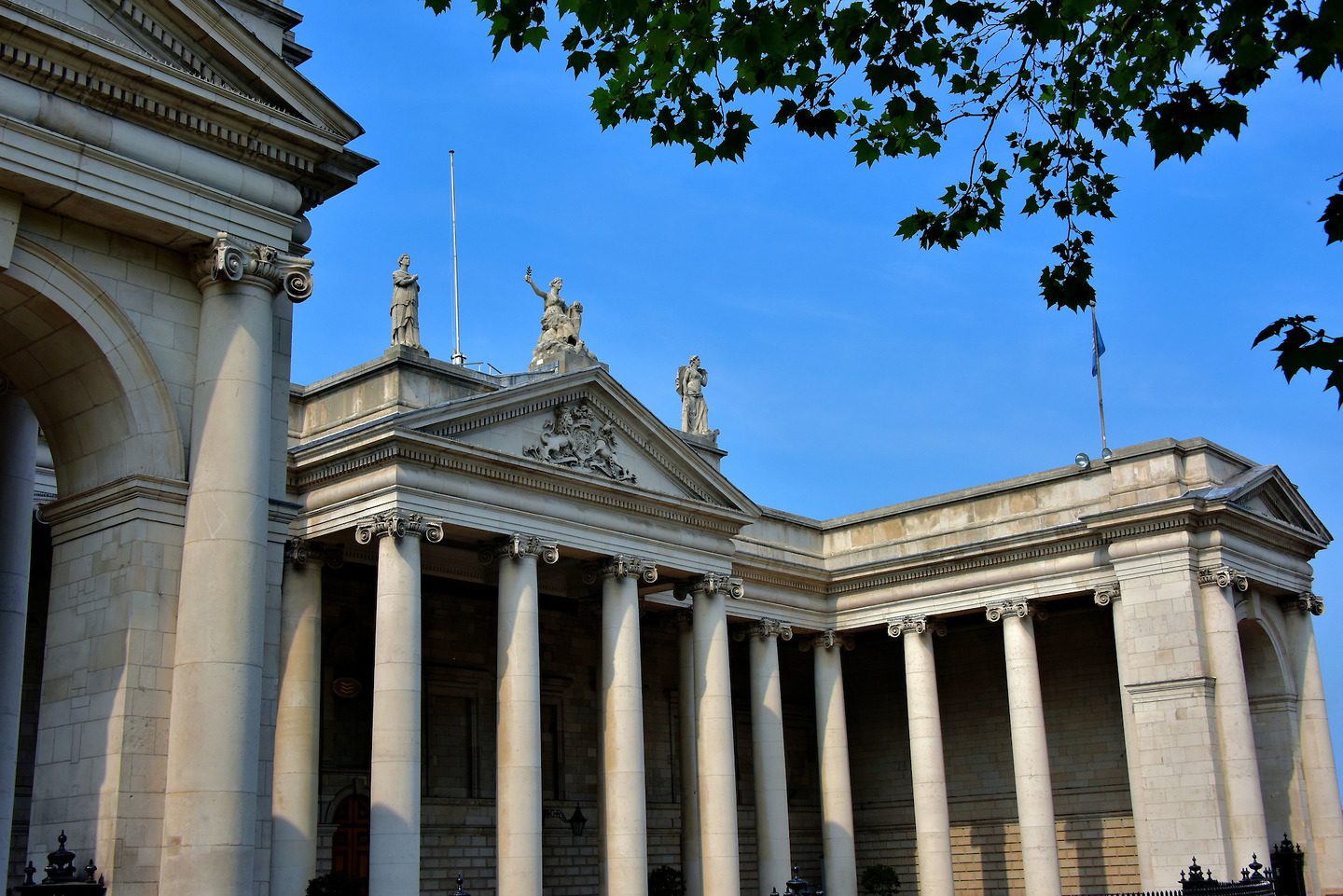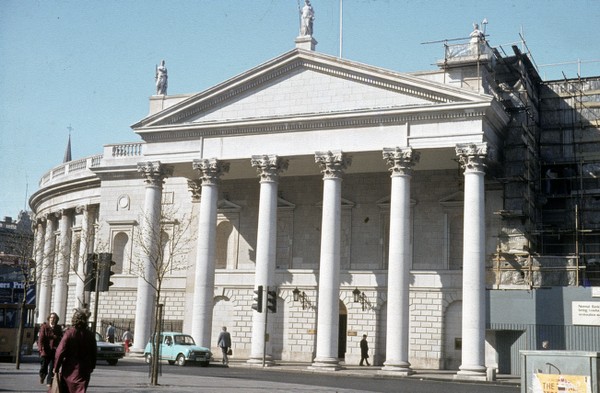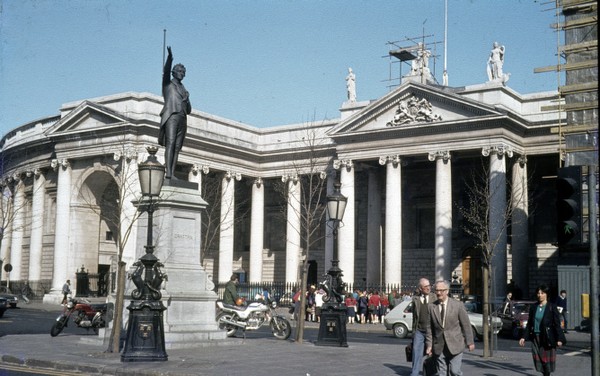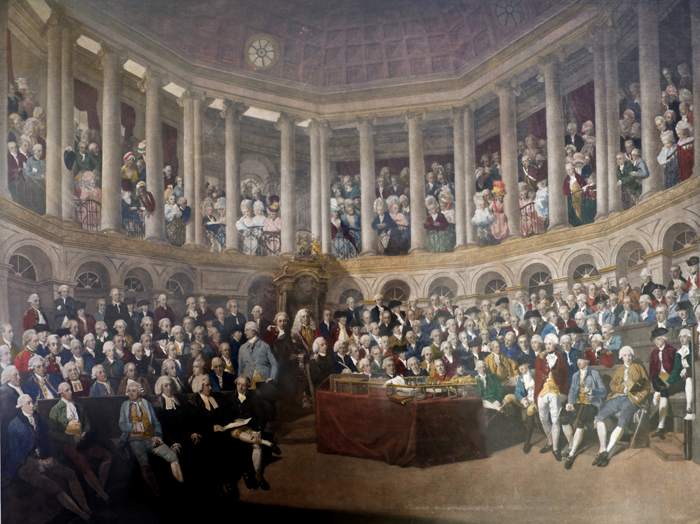Parliament House in Dublin, Ireland, was home to the Parliament of Ireland, and since 1803 has housed the Bank of Ireland. It was the world's first purpose-built bicameral parliament house. It is located at College Green. Construction started in 1729.

The building was home to the two Houses of Parliament, serving as the seat of both chambers (the Lords and Commons) of the Parliament of the Kingdom of Ireland for most of the 18th century until that parliament was abolished by the Act of Union of 1800, when Ireland became part of the United Kingdom of Great Britain and Ireland. The current parliament building is Leinster House.

The design of this building, one of two purpose-built Irish parliamentary buildings (along with Parliament Buildings, Stormont), was entrusted to an architect, Edward Lovett Pearce, who was a member of parliament and a protégé of the Speaker of the House of Commons, William Conolly of Castletown House. Pearce's design was revolutionary. The building was effectively semi-circular in shape, occupying nearly 6,000 m² (1.5 acres).

The principal entrance consisted of a colonnade of Ionic columns extending around three sides of the entrance quadrangle, forming a letter E. Three statues, representing Hibernia (the Latin name for Ireland), Fidelity and Commerce (later carved by Edward Smyth) stood above the portico. Over the main entrance, the royal coat of arms was cut in stone.

According to en.wikipedia











